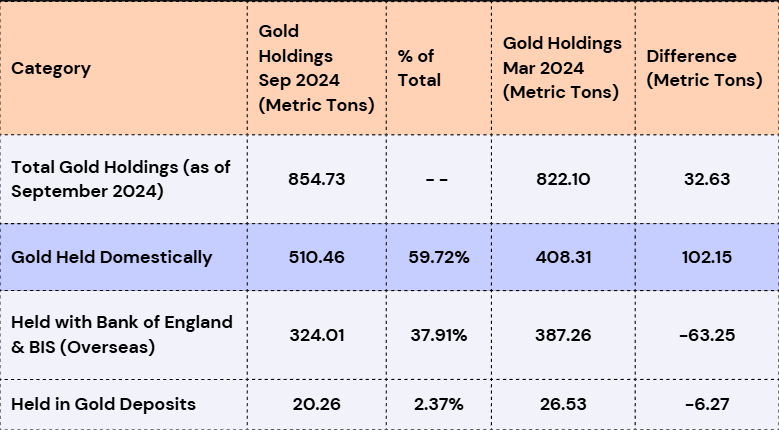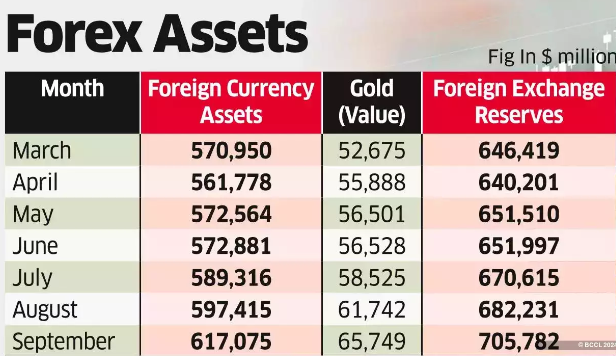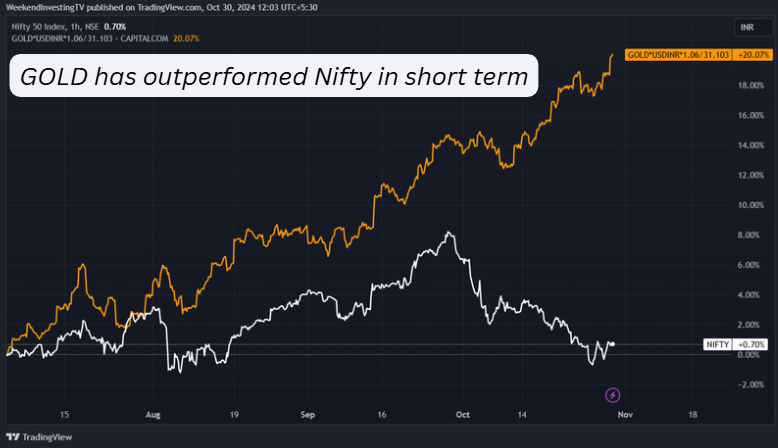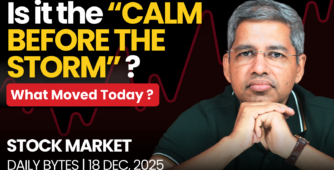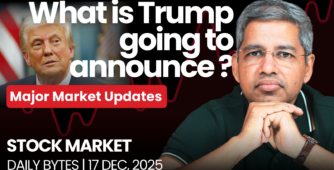
Today, we have an interesting topic to delve into: why and how we have brought some gold back to India from the UK, and why this is significant in the history of our country. This move also signals the strength of the current economy, indicating that we don’t feel the need to have any gold outside, ready to be pledged anywhere. We’ll have more details on this in the second part of the video
Where is the market headed?
Market Overview
The market is down half a percent again today, very sluggish. Notably, we haven’t had even a single day of any sharp upward move since the 1st of October, or even the 30th of September. It’s been almost a month now, and the market has been reeling under this pressure. If it stays here for a while longer, that’s fine. However, this new head and shoulders pattern has emerged; the earlier one was in the middle, and now we have a bigger one. If this gets breached and we begin to go down, we may be looking at something akin to the bottom of the election day low. This is sort of the worst-case scenario I am penciling in right now in my mind.
None of the actions I’m taking for myself or for any strategy will be determined by what I think the market will do. This is purely to condition your mind to be self-set for any further damage. If it happens, it should not come as a surprise. So, if the market goes towards 21,621, 200, your mind should already be conditioned to accept that if it happens, it happens, and then the path forward should be interesting.
Most people try to weave in and out of the market. This is possible when you have smaller portfolios or when dealing with only a few stocks. However, as your portfolio grows and its thesis evolves over time, it won’t just be about stop losses here and there. You’ll find that staying in the market and rotating your strategies effectively during market downtrends is the way to go forward without worrying too much about how markets may come down or not.
Today was yet another day when the market has not crossed its previous day’s ranges. It was a sort of inside day, a quiet day, down half a percent
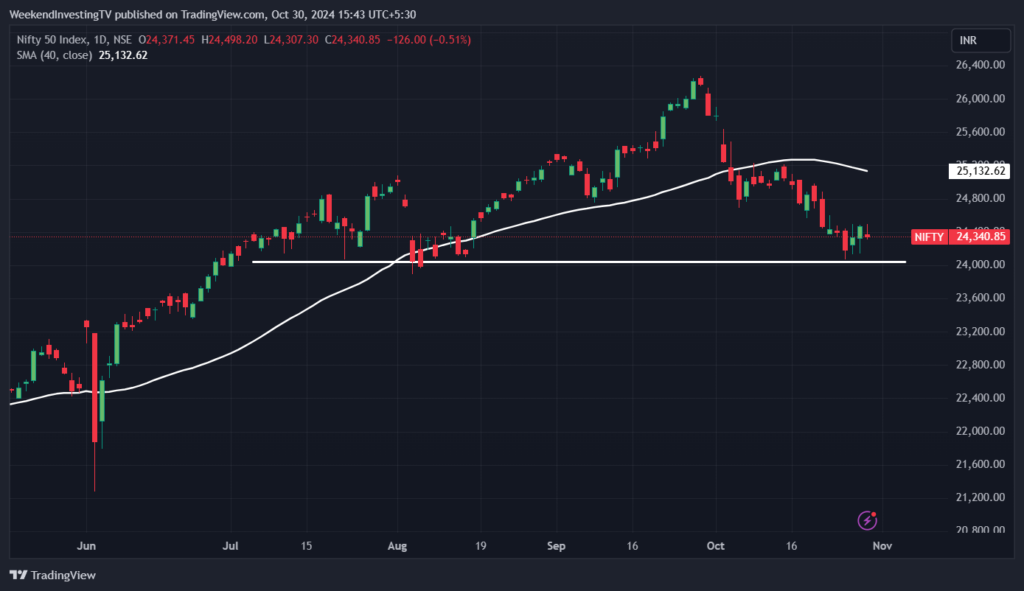
Nifty Next 50
Nifty Junior was down 0.38%, although it did manage to go slightly higher than yesterday. However, not even a two-day high has been crossed on both these indices, and they remain reasonably weak.
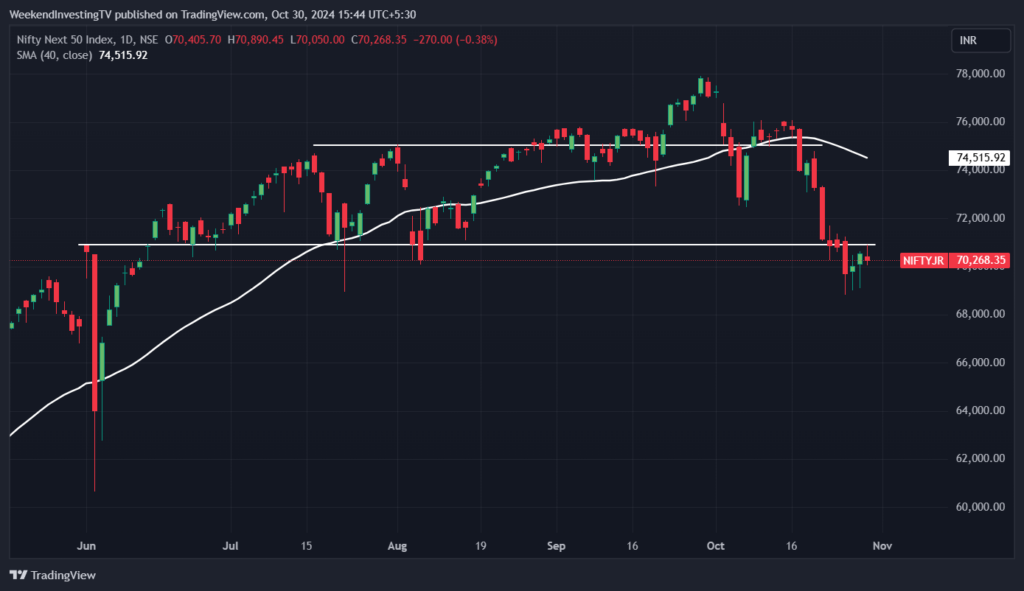
Nifty Mid and Small Cap
The mid-cap index also gave up some of the gains it had during the day but still looks slightly better. It tried to get above last Friday’s big down day but didn’t succeed. It’s up 0.24% for the day.
Small caps have actually seen the market go beyond the previous Friday bar and challenge the day before that. The small-cap index is showing resilience; it has gone up almost 680 points from the bottom, up 1.19% today, which is reassuring as it indicates an attempt at a new leg up.
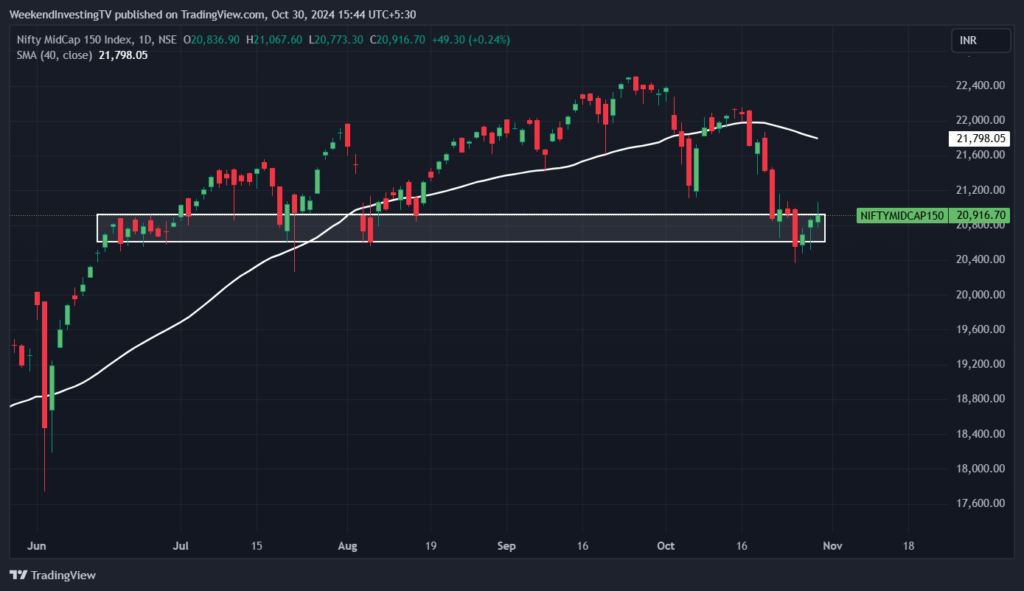
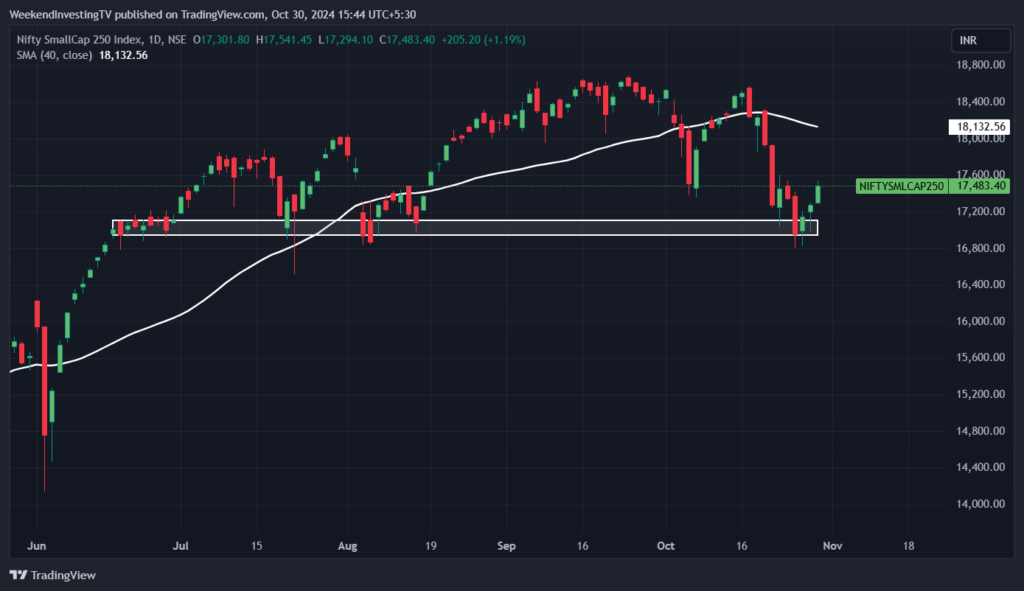
Nifty Bank Overview
The Nifty Bank index was completely muted and had an inside day, down 0.98%. There was a huge candle yesterday, and one would have liked to see continuation on the upside today, but that didn’t happen. There was, in fact, a gap down, and the market closed down 0.98%. Overall, it’s about flat—neither bullish nor bearish, but slightly biased towards the long side.
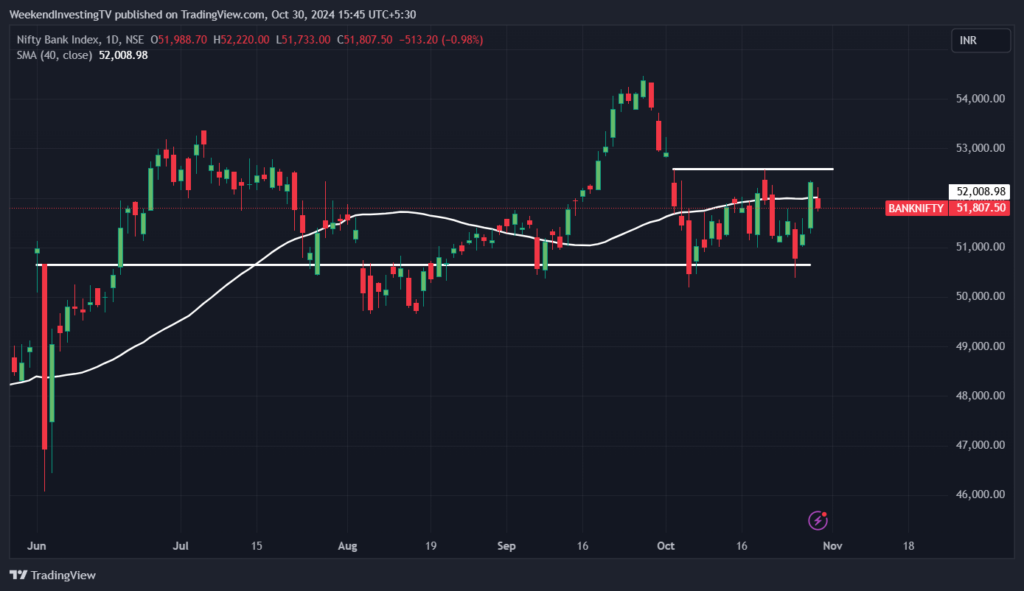
Advanced Declined Ratio Trends
In terms of advanced declines, we had 326 advances to 171 declines in the top 500 stocks, indicating a slight skew towards advances today, which is always a good sign. In the previous session, FIIs sold only 500 crores, while DIIs bought 700 crores. The activity in the market itself has shrunk this week, and I think the numbers for today will also be small. Tomorrow, being the last full session of this week, we can likely expect low volume.

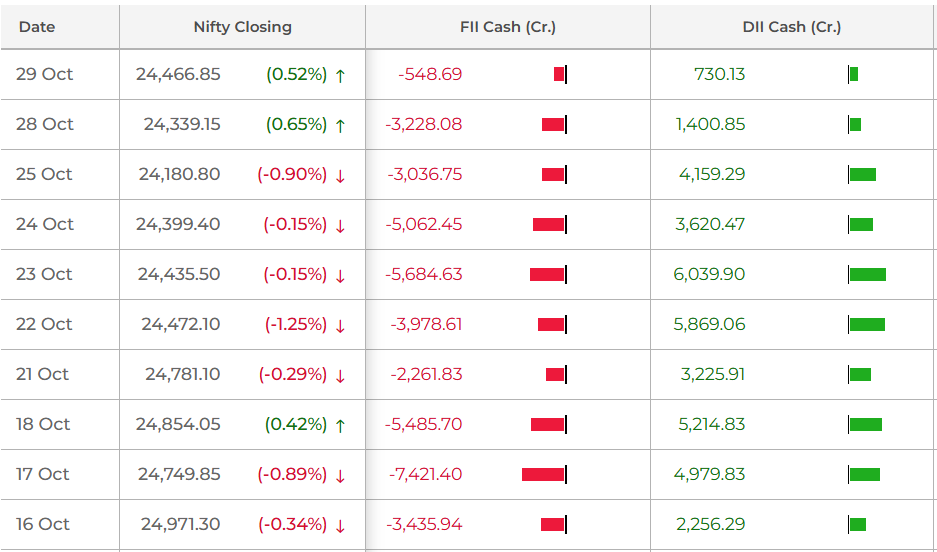
Nifty Heatmap
The heat map for the day shows some green spots in the FMCG space. Adani Ports did well, along with several other Adani stocks. Autos had a sharp reaction after the drubbing in the last few sessions, with Maruti up 1.9%. Tata Motors didn’t see much movement, while Hero Motors was slightly up. However, most of the damage happened in the banking space, where most of yesterday’s gains were given back. Infosys, HCL Tech, and Tech Mahindra were down, while Reliance remained flat. Coal India saw a slight increase, but Cipla dropped nearly 4%, and Sun Pharma also faced declines. The pharma sector had some sell-off.
In the Nifty Next 50 space, stocks like ICICI, Mother Son, Zomato, Dmart, and Geo Finance led the downtrend, while some sporadic stocks showed green. IRFC stole the show today, with rail stocks like RVNL and IRCTC performing well, with IRFC up by 8%.
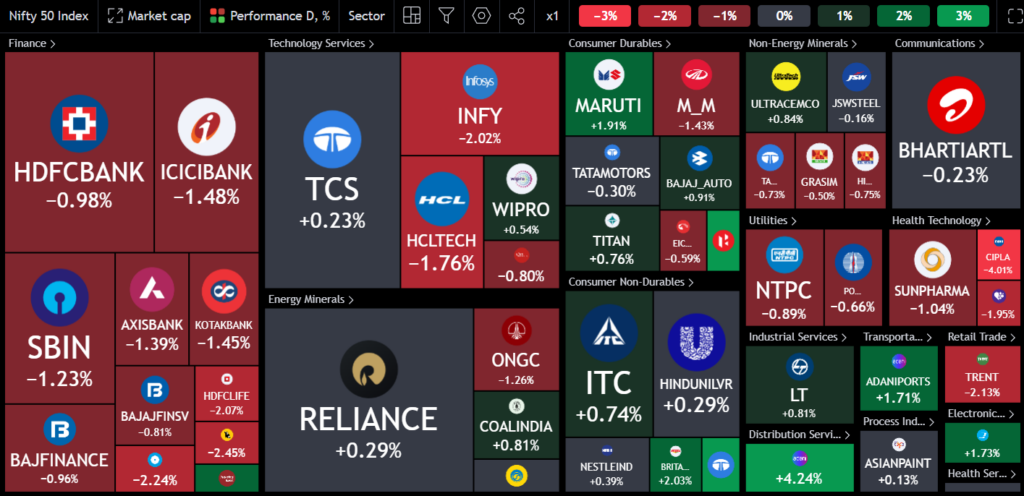
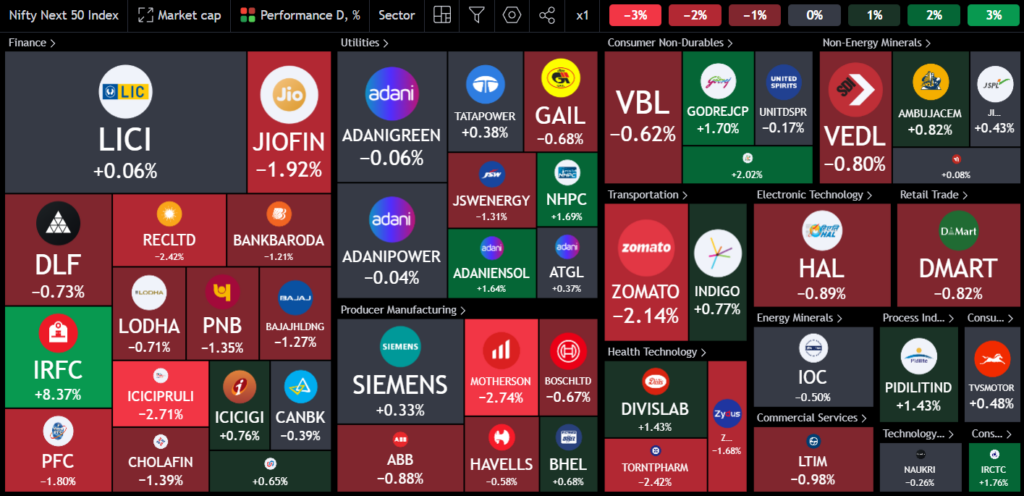
Sectoral Overview
Most sectors remained flattish, with Pharma and private banking down nearly 1%, while FMCG saw a gain of 0.9%. Overall, there wasn’t much interest in the markets, and the volumes are likely lower today, which should continue into tomorrow and the Murad session on Friday.
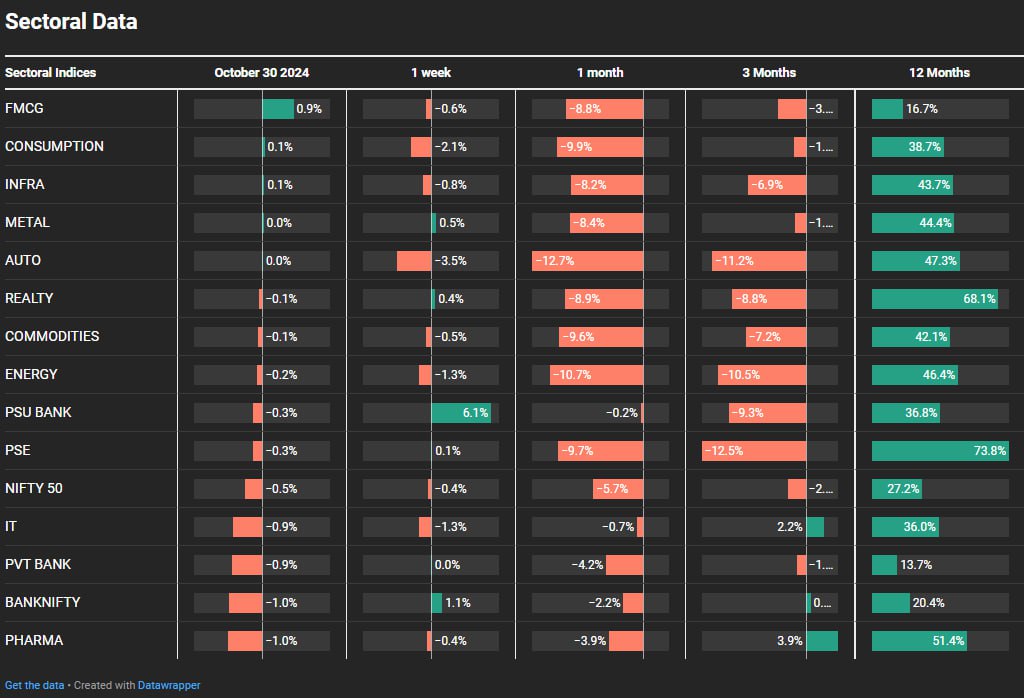
Sectors of the Day
Nifty FMCG Index
PSU banks have emerged as the top gainers for the week, up 6%. FMCG stocks have also come off a bit from their huge downside, with a 0.92% increase led by Radico, Khetan, Marico, Tata Consumer, and Balrampur Chini, but not in full-fledged flow. The heavyweights in the FMCG group, such as HUL, ITC, Dabur, and Nestle, are not performing prominently
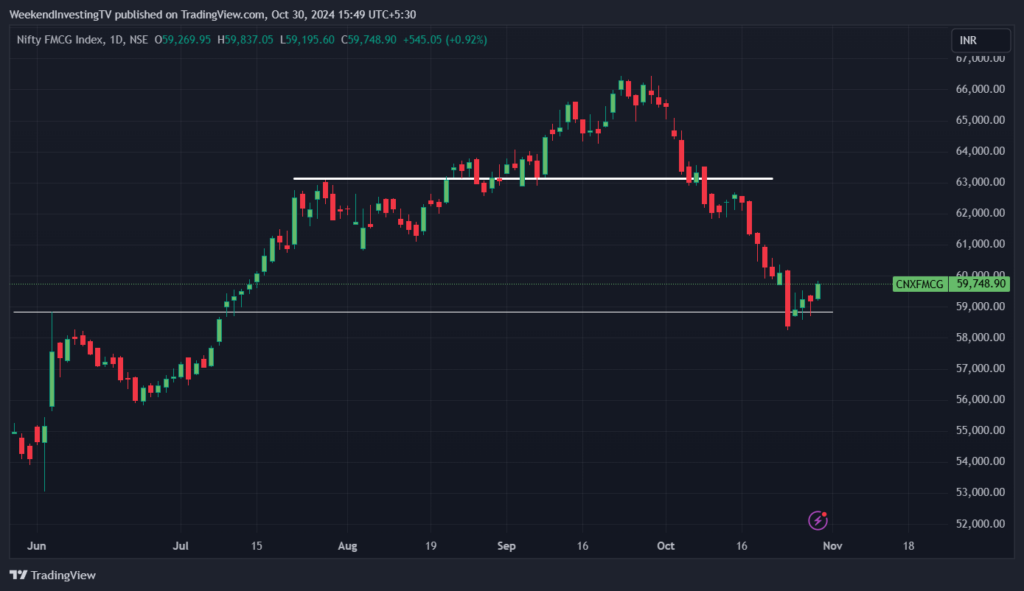
Stock of the Day
Capri Global Capital
Capri Global has risen by 15% on results, and this stock has been on a tear for a long time, going from 5 rupees to 210 rupees over the last decade.
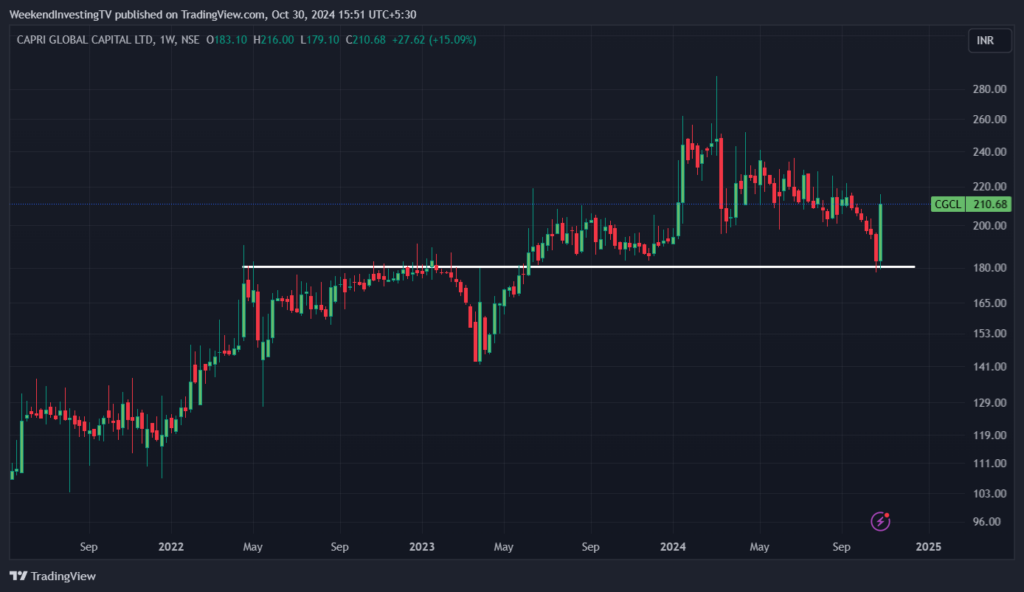
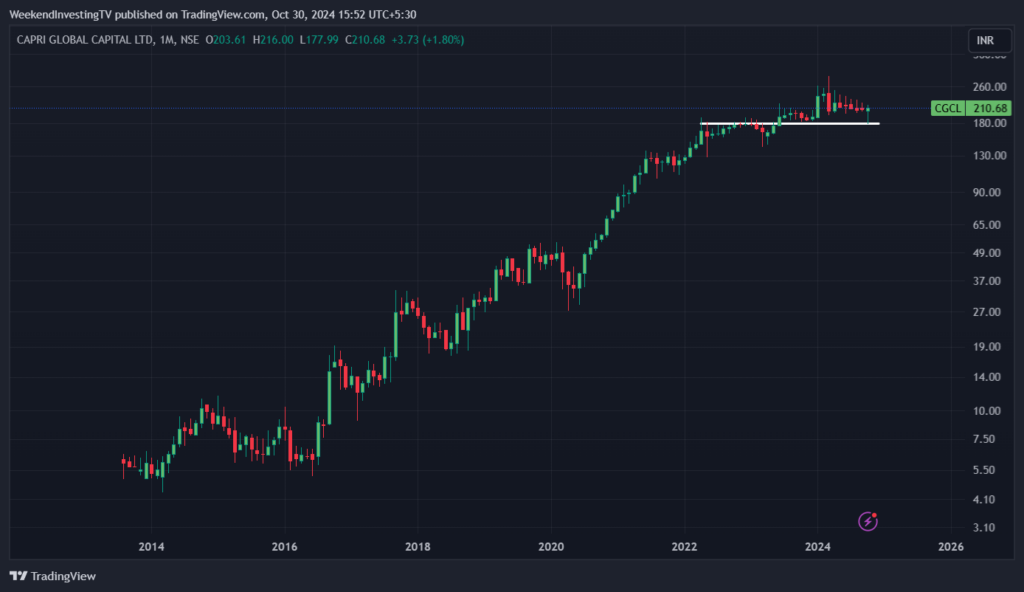
Story of the Day – Gold is coming back to India
As reported in the Reserve Bank report, 100 tons have been withdrawn from foreign custody, bringing the overall total to 220 tons of gold that has come back. For context, this gold was pledged in the early ’90s during a crisis when we needed about $400 million. This practice of keeping gold outside the country started to ensure that, in case of immediate liquidity needs, our gold would be with a custodian adhering to international delivery standards.
This means knowing how many ounces or bars of what purity are approved by the London Bullion Market Association (LBMA). Once we established overseas holdings, it became difficult for subsequent governments to consider bringing it back. This was largely due to lethargy; for example, if your stocks are lying in an inactive demat account elsewhere, you may not want to move them. Most governments since the mid-1990s did not pay attention to the fact that, as the economy improved and forex reserves increased, there was no need for collateral sitting outside.
Whenever the economy slows down or a forex crisis arises, we can always ship it back. A total of 100 metric tons or 200 metric tons is not a big deal to move. This government deserves credit for attempting to reduce overseas holdings. Many people began to question whether that gold actually existed. Although it was listed in the books, there was doubt about whether we could retrieve it, especially after the events surrounding Russia when $400 billion of reserves were frozen by the U.S.
This incident in 2022 has prompted many countries to bring back their gold due to diminishing trust between Western economies and others. If India were to face sanctions, this gold would likely be the first asset to get frozen. Thus, it makes sense to keep our gold where we can access it easily. At one point, nearly 75% or 70% of our gold was outside the country, but that has now decreased to around 40%.
There’s still more to go, as we’ve brought back gold in two tranches totaling 220 metric tons. This will instill confidence among our citizens. For comparison, the U.S. has a gold holding of around 8,000 tons, secured in a location called Fort Knox in Texas. Interestingly, there hasn’t been a single audit of Fort Knox in the last five decades, leading to conspiracy theories questioning whether the U.S. actually possesses that gold.
Having your own custody of assets, particularly gold, is crucial. Gold is the only asset that does not carry counterparty risk. If you hold physical gold, there’s no counterparty involved. However, if your gold is pledged or held by someone else—whether an ETF manager or a digital gold provider—you are relying on a counterparty to fulfill that obligation.
As of September 24, we had 854 tons of gold, up from 822 tons. The Reserve Bank of India has been gradually increasing its domestic holdings, now sitting at nearly 60%, which was previously around 50% just six months ago. The rest is still held with the Bank of England and in some deposits. It would be great if all of this gold could also come back home, as there is no real need for it to remain overseas.
The RBI governor stated that we have the capacity to store more gold domestically, suggesting that previous storage issues have been resolved. Our forex assets as a whole have also been rising; for instance, we had forex reserves of $646 billion in March, which have now increased to $700 billion. The value of gold within that has risen from $52 billion to almost $65 billion, raising the percentage of forex reserves held as gold from 8% to 9.32%.
This percentage is still lower than many other countries, where the average central bank holding is around 12%. As this number continues to rise, we may see a global average of about 20% this decade. Gold has unique properties and tends to perform well during times of distress. In the last month, while the Nifty has underperformed, gold has outperformed, fulfilling its expected role.
Central banks are increasing their gold holdings at a rapid pace. In the last 50 years, central banks were net sellers of gold until the 2008 crisis, when there was a significant shift to net buying. Initially, they bought about 500 tons per year, but in the last two years, that buying has surged to around 1,000 tons annually. Given that the total production of gold is about 3,000 tons, and with countries like India consuming 800 tons and China consuming 900 tons, the remaining supply for central banks is limited. This rising demand combined with stable production will inevitably drive prices up.
In the first half of this year, we’ve seen strong demand for gold, and while we may not achieve the figures from the previous years, we will come close. Historical data shows that before gold was decoupled from the U.S. dollar in 1971, countries would keep 50-60% of their forex in gold. After that, this percentage declined to about 8-9%. However, since 2008, that percentage has been steadily increasing, and we might see it reach 20-30% in the next decade.
This trend reflects a significant shift in how central banks view the risk of holding only U.S. dollars. With the potential for reserves to be frozen at any moment, central banks, including India’s, are reassessing their strategies. As we see other countries, such as China and Russia, rapidly accumulating gold, it raises questions about the underlying reasons for this behavior.
You should consider your own percentage allocation to gold. If you’re just starting your gold journey, think about what that allocation should be. Discuss this with your financial advisor and don’t let them limit you to just 1, 2, 3, or 4%—that’s meaningless.
